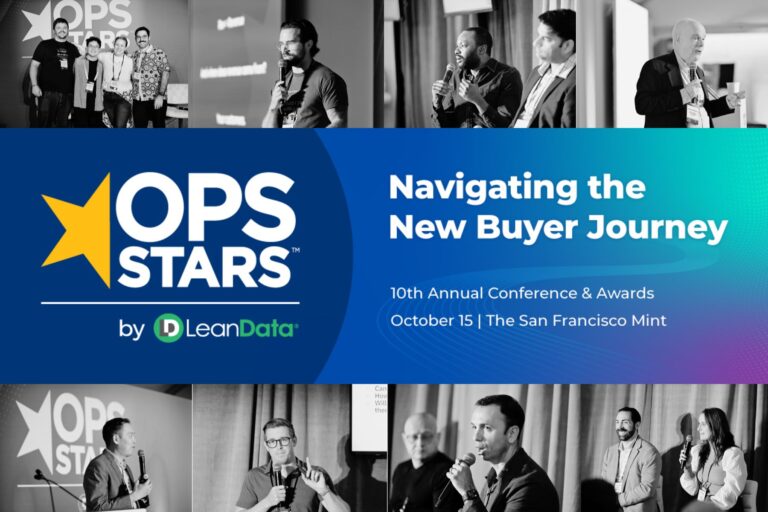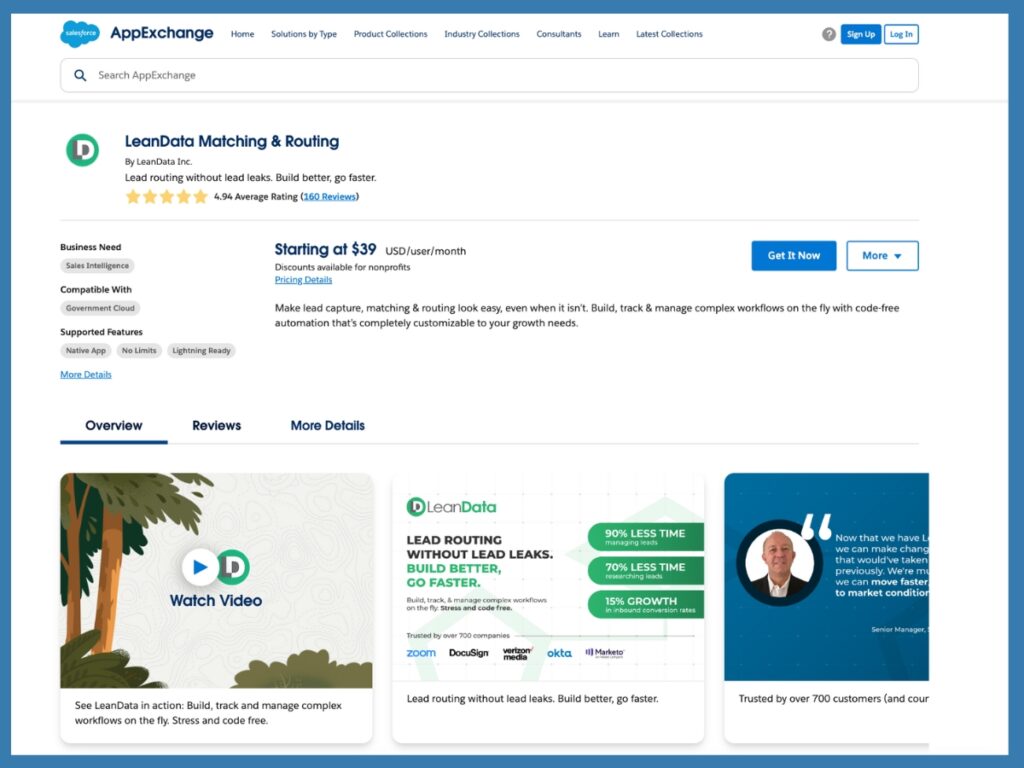If you’re in the market for lead management software, the last thing you want is Buyer’s Remorse.
Nothing’s worse than making a big purchase and regretting it.
And when you’re spending your company’s money, the pressure is even greater. Make the wrong software decision, and your professional reputation is on the line.
When purchasing lead management software, you’re typically looking to eliminate a variety of pain points. These may be lead leakage, unmanageable Apex code, unwieldy CSV spreadsheets, manual triage, or poor handoffs between departments. Sometimes you need to fix an entirely broken sales process.
We’ve identified some pitfalls to avoid as you evaluate different vendors. Here are the six red flags to watch for when investigating lead management software.
Red Flag #1: Unreliable Lead-to-Account Matching
Matching leads to accounts is a must-have in account-based marketing (ABM). It’s also the foundation for providing a smooth buying experience. When leads are connected to accounts, this prevents multiple sales reps from calling the same prospects.
Accurate matching also helps Sales teams spend more time engaging with prospective customers rather than researching accounts.
When investigating lead management software, beware of platforms that only offer exact matching or domain-only matching. A reliable matching solution considers many other fields and offers tie-breakers for customization. This allows you to navigate complicated parent-child hierarchies as well as control for duplicate accounts.
Also beware of platforms that have a limited number of matching rules to choose from, or require the customer to manually set up all rules. This increases the risk of unreliable or incorrect matches, as opposed to just missing data that wasn’t provided in the first place. This can then cause leads to fall through the cracks. It also increases the workload related to managing the tech itself.
Red Flag #2: Limited Lead Routing Flexibility
A quick lead response time, aka speed to lead, initially requires leads to be correctly routed to the most appropriate sales reps. Errors in routing create friction on your revenue team. For example, you don’t want leads, contacts, accounts, and/or opportunities assigned to the wrong sales rep or simply lost in the system. This also decreases productivity, and wreaks havoc on the entire marketing and sales process.
When researching lead routing platforms, watch out for lead routing systems that can only assign records to an account owner or a round robin team. It’s important to find a solution that empowers your team to build, monitor and optimize custom routing for any object they wish. If assignment logic is overly simplified, the software may not support the inevitable complexity as your business scales or adapts to new go-to-market (GTM) strategies.
Your lead routing software should allow you the flexibility to update records, merge duplicates, create new records, and convert leads to contacts. In addition, it should be able to assign contacts to buying groups and even allow for campaign-based routing.
Red Flag #3: Software is Not Salesforce-Native
People often purchase lead management software when their growth plays become more complex and misrouted objects in Salesforce become increasingly problematic. However, you don’t want a mission-critical automation to live outside of Salesforce.
Using a non-native Salesforce lead management platform puts your company and customers at risk for processing delays and API limitations. These risks directly impact revenue.
When lead management software isn’t native to Salesforce, customer data will have to leave Salesforce. This increases the chances for disruption and slower processing speeds. Plus, this scenario creates a step between your Marketing Automation Platform and Salesforce that can slow the Marketing to Sales handoff.
Beware of false claims. Just because a company has an app on the Salesforce AppExchange doesn’t mean that data is not processed by a third party. “Salesforce Native” is defined by Salesforce as an app “built 100% on the Salesforce Platform and that customer data is not processed by a third party.”
Red Flag #4: Frustrating User Experience
Software should be easy to use, and lead management software is no exception. When customers struggle to use any software, this not only impacts adoption, but more importantly, this adds delays when troubleshooting or managing lead routing changes.
Creating and optimizing your routing flows should be easy and intuitive. With regards to lead management software, make sure your team will not have to rely on vendor support to build and maintain your automation process. This will add friction to cross-functional teams with complex GTM motions. Whether it’s building custom automation within a separate platform or within Salesforce itself, requiring a consultative session for every change eliminates agility.
In addition, with lead routing, beware of a list-based rules configuration. When you aren’t able to visualize routing flows or outcomes, it can be time consuming to build, manage, and troubleshoot your lead management processes using just a list-based format.
Red Flag #5: Limited Insight into Routing Outcomes
When auditing and troubleshooting your lead routing flows, you need to know the answers to questions like:
- Why was a lead matched?
- When was a lead routed?
- What rules caused the lead to route the way it did?
- What was the original data on the record and which data was changed?
Look out for lead management software that offers no insights into routing outcomes or bottlenecks in your flows. A quality platform allows you to see which path an individual lead record took. It will also show which decisions were made at each step, and the final outcomes for assignments or data updates.
Red Flag #6: Conflicts of Interest
Some software vendors attempt to sell you lead management software products with conflicting features. For example, if a software vendor offers to enrich your data while also deduping your data prior to lead routing, steer clear. These two services are in direct conflict.
If the vendor fails at an accurate dedupe, you may still be charged for enriching that duplicate record. Additionally, if they require enrichment prior to deduplication then they can charge you to enrich data that you may have already gathered in the past on a duplicate record. As a result, this vendor has an incentive to lock you into multiple products, but no incentive to actually clean your data for an optimized revenue process.
You should be free to choose a vendor that allows you to plug in any sales intelligence you choose. So don’t pay a company to both provide your enrichment data and potentially delete that same data.
Conclusion
If you’re looking to replace a lead routing process that is difficult, time-consuming and manual, you’ve got to know the potential landmines in the lead management software space. Vendors typically don’t volunteer their vulnerabilities. And, replacing Salesforce assignment rules with a tool that is just like Salesforce assignment rules, or worse, is no solution at all.
Lead management software should reduce sales research, reduce Ops management time, and increase conversion rates, while at the same time, provide a measurable return on investment.
Check out this Lead Routing Buying Guide Checklist to assist your purchase process.














